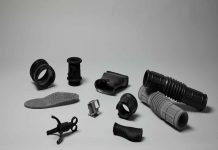Media Release by Gilmour Space
An Australian launch services company known for its orbital-class hybrid rocket technology, Gilmour Space Technologies, has unveiled a new 3D printed liquid rocket engine that will power the third stage of its Eris rocket to orbit.
The company today shared a video of a successful 190-second Mission Duty Cycle (or mission duration) test fire of its new regeneratively-cooled liquid rocket engine.
Eris is a three-stage rocket being developed by Gilmour Space for launching small satellites into low earth orbits. Its maiden launch is targeted to be at the end of this year from the Bowen Orbital Spaceport in north Queensland, pending regulatory and other approvals.
“The first and second stages of Eris will be powered by Sirius, our large hybrid rocket engine which is undergoing qualification tests,” said Gilmour Space CEO, Adam Gilmour.
“The third stage of Eris will be powered by this new 3D printed liquid rocket engine, called Phoenix, which we developed to give us the extra performance needed to deliver substantially more payload to orbit.”
Liquid rocket engines are used by most rocket companies around the world, including SpaceX, and are notoriously complex and expensive to develop. “With this key test, we’re proud to say that Gilmour Space has demonstrated sovereign capability in not one but two rocket systems,” said Mr Gilmour.
“The team has done exceptionally well to design, build, and test this new engine in just over a year while also scaling our main hybrid rocket engine, building out the rest of the vehicle, and pushing to develop a new orbital launch site in Australia,” he added.
“Our goal has always been to provide an affordable and reliable option for accessing space, and we believe this unique engine combination will allow us to achieve that for our customers.”




















